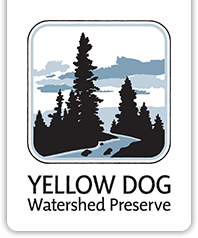
Blog > UNDISCLOSED FUNDING FOR CR595 LAWSUIT
UNDISCLOSED FUNDING FOR CR595 LAWSUIT

The Marquette County Road Commission (MCRC) unanimously agreed to sue the EPA for upholding its objections to the proposed County Road 595 a haul road for the Eagle Mine. This decision occurred during a closed session portion of a public meeting held on January 19th, 2015. The EPA will need to use public funding to hire lawyers to continue to defend their decision and our local environment. Our misguided local road commission’s agenda does not serve the needs of citizens, only corporations and agencies who profit from this excess development at whatever cost. The MCRC will not publicly disclose the source of funds for the lawsuit.
On January 20, 2015, the Marquette County Board voted against supporting the lawsuit 3-2, and Lundin Mining Company itself will not provide comment for or against it. It does not sound like local citizens support this effort as much as the road commissioners had hoped. On January 21, The Marquette County Townships Association voted in support, but Lundin Mining Company stated they will not provide funding for the lawsuit which is an estimated $500,000 for the MCRC litigation according to the Mining Journal. There is no estimate for what it will cost the EPA in taxpayer’s money.
YDWP encourages the public to attend the Marquette County Board Meeting held on February 3, 2015 at 6 pm at the Henry A. Skewis Courthouse Annex. The MCRC will be there to explain their decision to sue the EPA with secret funding.
The estimated cost to construct CR595 has risen to $100 million for infrastructure (Mining Journal) that will cross 21 miles of partially hydric and hydric soil types, wildlife corridors, isolated waterways, and wetland headwaters for several major watersheds in Marquette County. In their application, the MCRC recognized that there are no references to the need for a north-south connector west of the Silver Lake Basin in county planning documents or resolutions prior to 2010, and yet it is proposed as an essential public road. This has never been the case, rather it would be a haul road to serve mining and timber industries. If built, the road will require filling 24.3 acres of pristine wetlands, increased fragmentation, 22 more stream crossings (a major source of sedimentation), possible increased wetland salinity levels, and disrupted habitat for endangered species.

